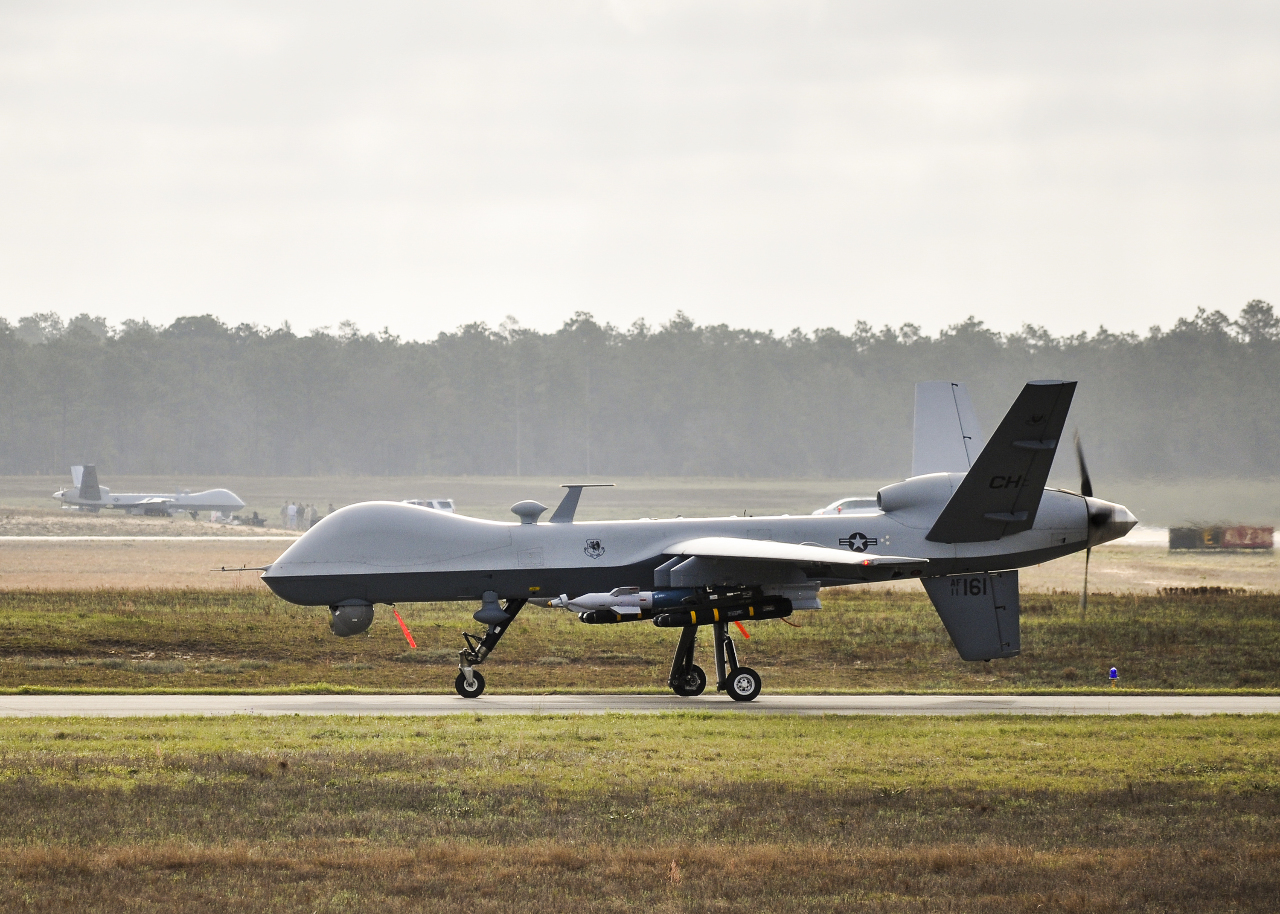MQ-9 Reapers, flown by US Air Force Weapons School pilots, conducted the first "ripple attack" against multiple maritime threats during a Weapon System Evaluation Program (WSEP) in Florida from 14th-17th March. During the exercises, which took place at Duke Field and Eglin Air Force Base, MQ-9s flew alongside Air Force fighter jets, Navy helicopters, E-8 Sentry, and U-28A surveillance aircraft to evaluate the MQ-9's ability to use Hellfire rockets to attack maritime threats.
The programme included Reapers from the 432nd Air Expeditionary Wing at Creech AFB, Nevada; a ground control station and two Reaper teams from the Texas Air National Guard in Houston; and a Reaper Aircraft Maintenance Unit from Holloman AFB, New Mexico. The tests built on last year's first from the WSEP, where a Reaper fired live weapons at maritime platforms for the first time.
The programme stems from a recognition that, as maritime threats to the U.S. and its allies increase worldwide, it is vital for remotely piloted aircraft (RPA) teams to understand the strategic importance of firing over water.
Also known as Combat Hammer, this air-to-ground WSEP, hosted by the 86th Fighter Weapons Squadron, is designed to evaluate a weapon system from cradle-to-grave in a combat representative environment. One of the unique features of the event is the opportunity to strike “swarms” of boats. In these simultaneous missions against 30-35 boats at a time, the boats race toward a vital US asset, often breaking ranks to rejoin a few moments later.

